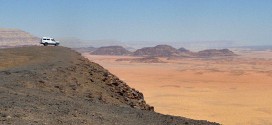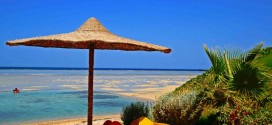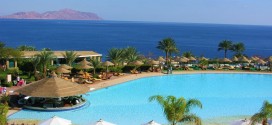 The Egyptian Red Sea resort for scuba diving, snorkeling and family fun, lies at the southern tip of the Sinai peninsula, overlooking the crystal clear waters of the Red Sea, a world renowned diving center.
The Egyptian Red Sea resort for scuba diving, snorkeling and family fun, lies at the southern tip of the Sinai peninsula, overlooking the crystal clear waters of the Red Sea, a world renowned diving center.
Today, however, diving is only part of the attraction here, as many visitors arrive simply to enjoy the sun, to para-glide and windsurf or bicycle, or to explore the magical desert landscape of the southern Sinai. Since the mid-1980s, Sharm El-Sheikh has become a first class holiday resort destination with the construction of about forty hotels and resorts.
The rapid and extensive expansion of this tourist area raised concerns, mainly how to protect the environment of Sinai. The huge number of visitors to this region has threatened the wild beauty of nature of the peninsula. Accordingly, during the last years the community of Sharm El Sheikh successfully made strong efforts and has set strict regulations to protect and to preserve the endangered environment of this region. The creation of the National Aquatic Park Ras Mohamed in 1983 was one of the first steps in this direction, and today a 52% of the Egyptian shoreline on the Gulf of Aqaba have become a protected area.

Prior to 1967, Sharm El-Sheikh was better known to the world of politics than to the world of tourism and watersports. Situated right at the straits of Tiran, Sharm El Sheikh became famous when Egypt’s former President Gamal Abdel Nasser decided to block the straits, thus cutting off Israel’s access to the Red Sea. The result was the Arab-Israeli conflict of June 5th, 1967.
From 1968 Sharm El-Sheikh slowly began to receive tourists and to grow, attracting divers, tourists, and residential guests till it became the international holiday resort with a very cosmopolitan feel of today. The strategic importance is still evident though. The town’s large southwestern inlet, Sharm El-Sheikh Bay, remains a military harbour.
Nama Bay
Located just a few kilometers north of Sharm El-Sheikh, became in the past few years the epicenter of tourism activity in the southern Sinai. Its resort hotels and shops, dive in tour operators, and energetic nightlife —to say nothing about the stunning beauty of the bay itself— make this recently developed area a magnet for visitors to Sinai.
Nama Bay is a natural outgrowth of Sharm El-Sheikh. It is situated along a lovely stretch of coastline at the mouth of the Wadi el-Aat, itself an attraction of considerable beauty.
All of the outstanding dive sites of the south Sinai are within easy reach.
The Aquatic Park Ras Mohamed occupies one of the world’s most extraordinary settings: a slender, dramatically arid peninsula at the very southern tip of the Sinai, rising to a dramatic promontory that looks out over some of the most gloriously rich coral reefs you will ever see. The Ras Mohamed Peninsula marks the nexus of the shallow Gulf of Suez and the deep intercontinental chasm of the Gulf of Aqaba, itself a small portion of the Great Rift Valley that stretches deep into Africa. Declared a park in 1983, Ras Mohamed contains within its area an outstanding variety of wild life, ranging from gazelles on its northern desert area to the brilliant orange coral groupers of its skirting reefs.
The boundaries of Ras Mohamed extend far out into the surrounding waters, and even the most casual visitor is struck by how much the park is dominated by the sea. Even the dry land area of the park seems a part of the marine world: In the north large dunes interspersed with outcroppings of Miocence limestone in which many fossils are embedded. In fact the dramatic, promontory that marks the Sinai’s southern tip belongs in part to the sea, as it is in fact an enormous, fossilized coral reef, left high and dry tens of thousands of years ago.
For many visitors, Ras Mohamed’s most stunning scenery is found underwater, in the broad, terraced coral reefs that encircle the peninsula with fire corals and brilliant sea fans among which a truly magnificent array of both reef and pelagic fish live – over a thousand different species in all.
 Sakura Travel World Group
Sakura Travel World Group








